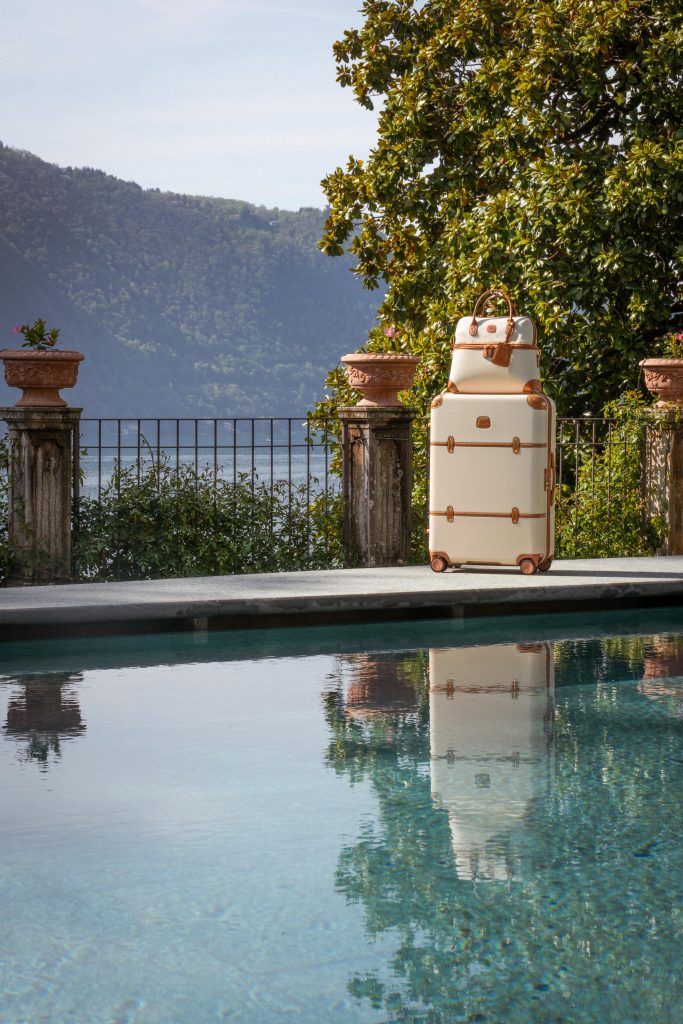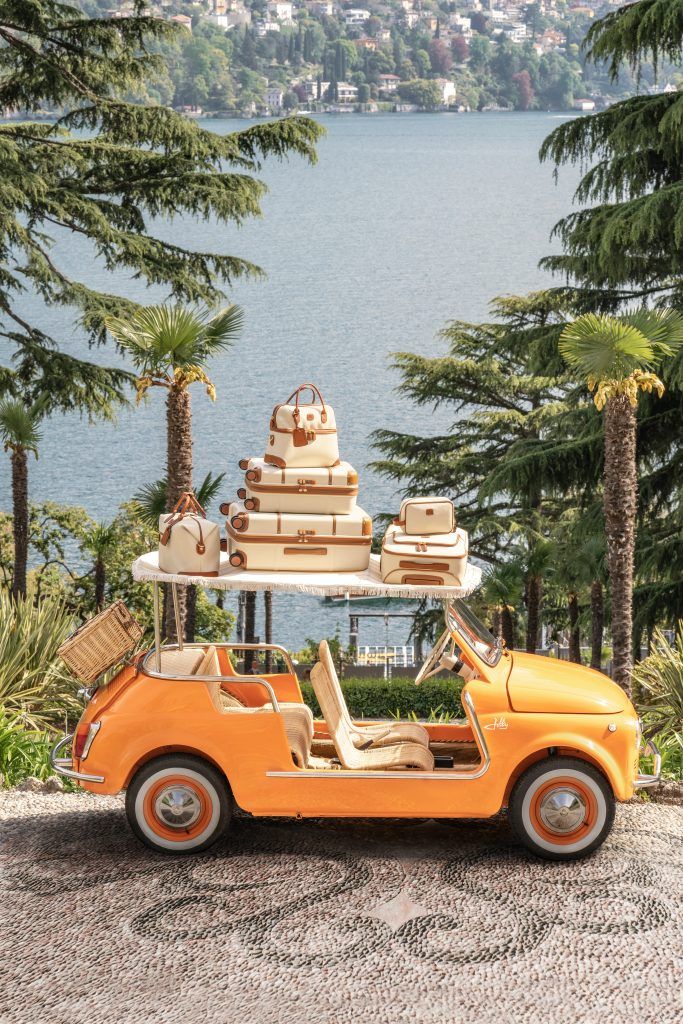Baggage is undeniably a crucial element of the travel experience, influencing not only convenience but also reflecting personal style and preferences. As travellers seek luggage that not only meets their functional needs but also aligns with their aesthetic sensibilities, the importance of selecting the right luggage has become increasingly prioritised across all demographics of wanderers.
While established global brands like Delsey and Samsonite have long dominated the market with their reputation for durability and innovation, the landscape is evolving. Smaller, niche brands are emerging, offering unique designs, specialised features, and a more personalised approach to customer service. These smaller brands are carving out a significant market share in the fiercely competitive luggage industry, catering to the diverse needs and preferences of modern travellers. In this dynamic marketing environment, consumers are also placing a growing emphasis on sustainability. With environmental concerns gaining prominence, travellers are seeking out luggage brands that prioritise eco-friendly materials and manufacturing processes.
This shift towards sustainability is reshaping consumer preferences and driving innovation in the luggage industry. Moreover, the rise of digital channels has transformed the way luggage brands engage with consumers. Social media platforms and online marketplaces have become vital avenues for reaching and interacting with customers, allowing brands to showcase their products, share engaging content, and cultivate brand loyalty. Particularly, paid advertisements on platforms like Facebook and Google Ads have proven to be effective tools for reaching potential customers, especially in penetrating the lucrative Asian market.
The proof is in the pudding. As per a report from GlobeNewswire in 2023, the global luggage market underwent analysis across five regions: North America, Europe, Asia Pacific, Central & South America, and the Middle East & Africa. The report found that Asia Pacific commanded the largest market share, propelled by heightened consumer expenditure, growth in tourism, and an expanding middle-class population with greater disposable income.
The global luggage market is primed for significant expansion, with projections indicating an increase from US$25.5 billion in 2023, boasting an impressive compound annual growth rate (CAGR) of 7.48% throughout the forecast period, as stated in the report. As the travel industry continues to evolve and adapt to changing consumer preferences and technological advancements, the competition among luggage brands will only intensify. Brands that can effectively differentiate themselves, innovate their products, and leverage digital marketing strategies will be best positioned to thrive in this ever-evolving landscape.
So what brands are thriving in Asia? We take a closer look, delving into the strategies, innovations, and unique approaches that have propelled them to success in this dynamic region.
Luggage as a status symbol
Increasingly, travellers are recognising the advantages of investing in durable luggage that stands the test of time. Delsey Paris, in operation since 1946 with a global presence through its numerous stores worldwide, is among those leading the pack in every aspect: quality, security, convenience, and style. “I see luggage as more than just a functional necessity for travellers – it’s an opportunity to enhance their journey and make a statement about their lifestyle,” says Davide Traxler, the global CEO of Delsey Paris, “Thoughtful design features and well-crafted luggage can significantly improve the travel experience.”
“Delsey’s brand essence represents not only quality and reliability but also serves as a symbol of sophistication and status,” adds Traxler.
Sustainability is also a significant advantage, with many consumers increasingly prioritising environmentally-friendly brands. This shift reflects a growing awareness among travellers who actively seek out greener options. “The Asian market is receptive to these values, contributing to a positive perception of the products,” remarks Sebastian Manes, co-founder of Harper Collective. The visionary luggage brand, co-founded by Jaden Smith, stands out with products crafted from a blend of 70 percent recycled ocean plastic and post-consumer plastic. “This resonates well with consumers, making them feel good about their purchase and the luggage they carry,” adds Manes.
Likewise, with LOJEL, a brand established in Japan in 1989, the right suitcase can transform a traveller’s journey. “A high quality suitcase is an investment to ease your mind and make your journey even more pleasurable,” says LOJEL’s José Muñoz, general manager (Hong Kong, Macau & Mainland China), “The quality and size of the wheels can drastically change how smooth you can carry your suitcase, especially when it is heavy.” Muñoz notes how hard suitcases can also give extra security, and lightness and space, for the suitcases.
Situated in the Lake Como region of Northern Italy, Bric’s has expanded its global footprint since its inception in 1952. Its rich history remains integral to its branding and resonates with its loyal customer base. “For customers who want to showcase their discerning taste and lifestyle, branding becomes crucial,” says PR and Communications Officer Luisa Puggioni, “Bric’s understands this desire for both quality and prestige, which is why we focus not only on making durable and elegant suitcases, but also on building a brand that represents luxury and elegance.”
Understanding the Asian consumer
Understanding the Asian consumer is paramount for successfully entering and thriving in such a market.
According to Traxler from Delsey Paris, Asian customers typically favour hard-sided luggage, placing a premium on security and safety for their belongings. “Japanese travellers appreciate the brake on suitcases, which prevents the suitcase from rolling away on a train or subway,” explains Traxler.
Harper Collective has also noticed an uptick in customers from regions like Japan. “While we are still in the early stages of our journey, countries like Japan have shown significant demand and support for our designs,” explains Manes.
On the contrary, Muñoz from LOJEL highlights that nowadays, distinguishing between customers in the West and Asia, especially concerning products like luggage, has become increasingly challenging, “I remember when I started working within this industry almost ten years ago, Asian consumers were looking for luggage that had extra security features such as aluminium frames instead of zippers, this is why we had several hard case frame collections back then,” he explains, “Their main worry was travelling to certain locations where their luggage could be ripped apart, hence they did not mind buying those types of products despite both weight and price being more expensive.” He explains that a significant shift occurred when customers became more informed about new zipper features in the industry, such as reinforced double coil zippers, which are highly resistant to penetration. Additionally, TSA locks, known for their exceptional security, can only be opened by the owner or airport security agents, further enhancing peace of mind for travellers. “Ever since, the similarities between Asian and Western consumers became almost identical – nowadays it is more a matter of personal preference such as design and colours,” adds Muñoz.
Its best-seller, the Cubo collection, has become a hit thanks to it distinctive top-opening function, ideal for those small rooms in places like Hong Kong or Tokyo. “Cubo offers that flexibility to reach all your belongings within a limited space, hence it explains why you can find many competitors having similar products in the market nowadays,” adds Muñoz.

Bric’s Puggioni emphasises the Asian consumer’s strong appreciation for quality, craftsmanship and luxury. “While functionality remains essential, Asian consumers also prioritise aesthetics and brand prestige when choosing luggage,” she adds, “Additionally, Asian travellers tend to value the status associated with prestigious brands, making branding and exclusivity significant factors in their purchasing decisions.”
Francesco Pavia, founder of Crash Baggage, a luggage brand established in Venice, Italy in 2013, observes that the Asian customer has consistently shown a keen interest in European culture, often viewing it as aspirational. This perception makes investing in luggage an appealing option, as it serves as a status symbol in its own right.
Likewise, at Carl Friedrik, Asian consumers demonstrate a preference for premium suitcases, suggesting a dedication to quality and brand loyalty slightly surpassing that observed in the West. “Certainly, luggage seems to be on a closer parity with luxury bags in the region – it’s not just a functional travel accessory,” says the brand’s marketing lead, Giovanni Allegrezza.
Growth
In recent years, the Asian market has experienced significant growth and is now emerging as a dominant force. At LOJEL, there has been a noticeable increase in revenues and sales from key markets such as Hong Kong, Singapore, and Taiwan, all of which are pivotal in luxury travel. Muñoz from LOJEL anticipates continued expansion in these markets in the short term, along with Japan and Mainland China.
Delsey Paris has achieved remarkable global growth, surpassing pre-pandemic sales by over 40% in 2023. Asia remains the only region yet to fully rebound to pre-pandemic travel levels that were seen in 2019.
Meanwhile, Bric’s has witnessed increased popularity among customers in Singapore and South Korea. “These regions have experienced growing demand for premium travel accessories, driven by growing affluence and a thriving travel culture,” says Puggioni.
Carl Friedrik has seen success in Singapore and Hong Kong. “Both are important financial centres and we see a lot of customers based here using our luggage for short-term corporate travel,” shares Allegrezza.
For Crash Baggage, China stands out as the largest player in the market, albeit presenting several complexities. These challenges stem from factors such as rapid market growth and the increasing demand for pre- and post-sales services, including customer care and brand protection. Pavia notes that Korea is perhaps the most influential and trendsetting Asian country, while Japan places significant emphasis on design. He further explains, “In general, our brand has seen great success in Asia because we have a compelling narrative. Asians have a penchant for narratives, for connecting with the emotions a brand conveys; I believe it’s ingrained in the culture. And we offer more than just a story,” says Pavia.
Opportunities and Challenges
Expanding into Asian markets is a challenging endeavour that demands thorough research, preparation, and investment. DELSEY PARIS has successfully established a strong foothold in mainland China and Japan, maintaining an active presence through their proprietary websites and prominent online marketplaces such as T-Mall, Amazon, and Rakuten.
“This is bolstered by high social media engagement generating millions of impressions monthly,” shares Traxler. It also leverages the digital assets of its partners in Southeast Asia, establishing flagship stores on platforms like Lazada and other leading marketplaces. “Looking ahead, we’re thrilled to announce the upcoming launch of a brand page on Naver in Korea, alongside DELSEY’s own e-shop and offline points of sale, set to debut in Q2. This multi-faceted approach ensures that we effectively reach and engage with Asian consumers across regions with high internet penetration,” says Traxler.
Bric’s also acknowledges the significance of digital channels and e-commerce platforms in Asia. The brand has expanded its online presence by leveraging platforms such as T-Mall and CDF in China. Additionally, Bric’s is prioritising influencer collaborations to enhance engagement with its audience in the region.
LOJEL has ambitious plans to collaborate with local artists and brands, organising workshops, exhibitions, and joint ventures within its stores. This initiative is particularly focused on its upcoming Flagship Store, opening on Fashion Walk (Causeway Bay) in Hong Kong. “Going back to the omni-channel strategy, we must find new ways to connect people from our digital to our physical platforms and vice versa, what is known now as “phygital experience.” Every brand must work in this area, LOJEL is definitely one of them,” says Muñoz.
Harper Collective draws inspiration from music and photography professional cases, with its full black cabin with black hardware being particularly popular among Asian consumers. It has a collaboration with luxury brand MCM set to release in July. “This collaboration aims to reach Asian consumers through limited edition silhouettes available in MCM stores across Asia,” says Manes.
Carl Friedrik relies heavily on direct-to-consumer (D2C) channels, making digital platforms crucial for their marketing strategy. Paid advertisements on Facebook and Google Ads play a particularly vital role in their efforts to penetrate the Asian market. “Based on the success of traditional PR in the US and the UK, we’re also looking forward to work with a press agency in Asia to break into local news cycles and get some strong lifestyle and travel vertical coverage,” says Allegrezza.
Travellers now prioritise luggage not only for its functional aspects but also as an extension of their personal style and values. This evolution has paved the way for smaller, niche brands to enter the competitive landscape, offering unique designs and sustainable options that resonate with modern consumers, while larger, more established brands continue to lead the way.












